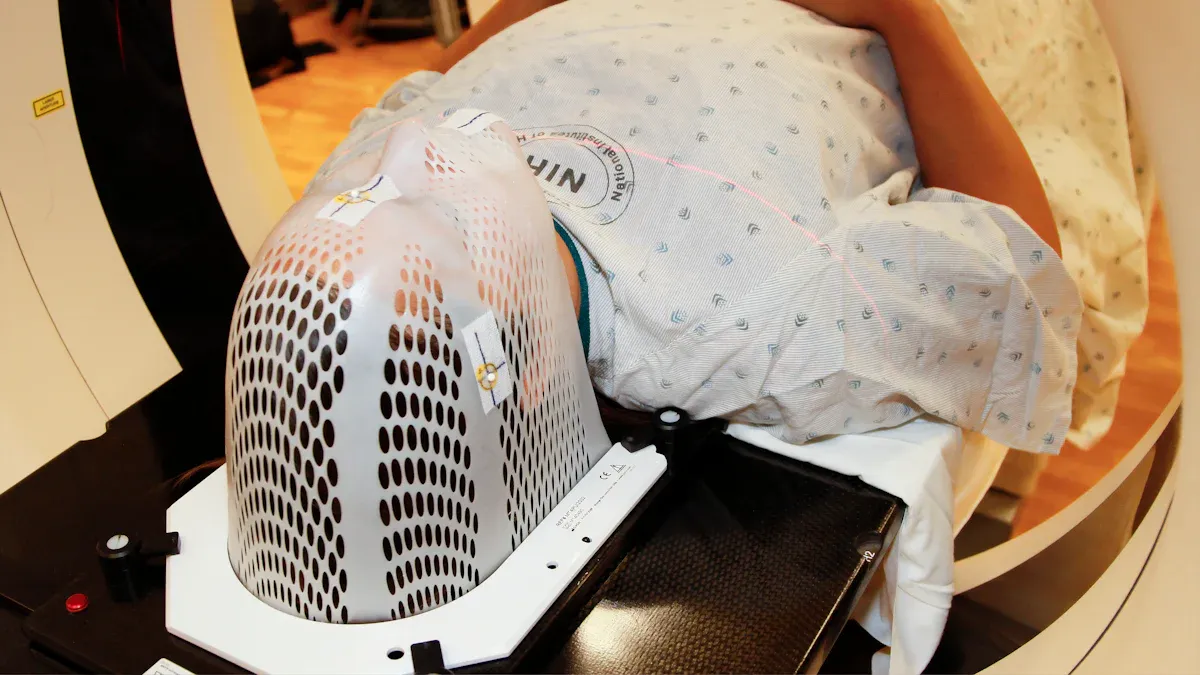Innovative Strategies to Boost Cancer Screening Rates

Cancer screening saves lives by detecting diseases early when treatment is most effective. Yet, many individuals miss these critical tests.
Between 30% and 50% of cancers could be prevented through recommended screenings. However, disparities persist. For example, in 2020, 69.4% of adults aged 50 to 75 were not up to date with colorectal cancer screenings.
Barriers like lack of healthcare access, financial constraints, and limited awareness prevent many from participating. Socioeconomically disadvantaged groups, including low-income and uninsured individuals, face the greatest challenges.
Innovative approaches to increase screening rates can address these barriers. By tailoring solutions to specific needs, you can help ensure more people benefit from early detection.
Key Takeaways
Cancer tests can stop 30% to 50% of cancers. Remind people to get tested early to find problems sooner.
Work with doctors and local groups to help people who need it most.
Share simple messages to teach why cancer tests are important. This can help people care more about their health.
Use tools like AI and online doctor visits to make tests easier, especially for people far away.
Give free tests or money help so everyone can afford to get checked.
The Role of Collaboration in Cancer Screening

Engaging Diverse Stakeholders
Partnering with healthcare providers and experts
Collaboration with healthcare providers and experts plays a vital role in improving cancer screening rates. You can work with doctors, nurses, and specialists to design interventions that address specific population needs. For example, integrating multiple screening services, such as breast and cervical cancer tests, can reduce logistical challenges for patients. This approach not only saves time but also increases participation.
Healthcare professionals also provide valuable insights into patient behavior and barriers to screening. By involving them in planning, you ensure that strategies are practical and effective. Additionally, partnerships with advocacy groups and patients themselves help create interventions that resonate with the target audience.
Collaborating with community organizations and leaders
Community organizations and leaders act as bridges between healthcare systems and underserved populations. You can collaborate with these groups to develop culturally tailored strategies that address the unique needs of socioeconomically disadvantaged communities. For instance, the NYC Colonoscopy Campaign successfully eliminated disparities in colonoscopy rates among Black and Latino individuals by working closely with local organizations.
Trusted community figures can also promote screening programs, making them more credible and accessible. Their involvement ensures that initiatives reach those who need them most, fostering trust and participation.
Applying Human-Centered Design
Understanding patient needs and preferences
Human-centered design focuses on understanding the needs and preferences of patients. By engaging with patients, survivors, and advocacy groups, you can identify barriers to cancer screening. For example, some individuals may avoid screenings due to fear or lack of knowledge. Addressing these concerns through education and support can make a significant difference.
Developing tailored solutions for specific populations
Tailored solutions improve the effectiveness of screening programs. For instance, the "De Casa en Casa" intervention significantly increased cervical cancer screening rates among Hispanic women by combining education and navigation services. Similarly, narrative short films have proven effective in conveying the importance of screenings to Spanish-speaking women. These examples highlight how innovative approaches to increase screening rates can address specific cultural and logistical barriers.
Leveraging Academic and Research Institutions
Identifying barriers through research and studies
Academic institutions play a crucial role in identifying barriers to cancer screening. Research studies often gather perspectives from patients and survivors to understand why some individuals avoid screenings. For example, the Pitt County Breast Wellness Initiative revealed that uninsured Black and Latina women faced significant challenges in accessing mammograms. This insight helped shape programs that provided education and navigation services, leading to a 68% screening rate among eligible women.
Sharing evidence-based practices for implementation
Collaboration with academic institutions also ensures that evidence-based practices are shared and implemented effectively. For instance, the President’s Cancer Panel recommends engaging diverse stakeholders to improve equity and access in cancer screening. By leveraging research findings, you can develop strategies that address health inequities and improve outcomes for underserved populations.
Addressing Barriers to Cancer Screening
Overcoming Knowledge Gaps
Raising awareness through educational campaigns
Many individuals avoid cancer screenings because they lack knowledge about their importance. You can address this by launching educational campaigns that highlight the benefits of early detection. For example, campaigns can emphasize how screenings prevent diseases like colorectal cancer by removing precancerous polyps. Studies show that 57% of adults are unaware of this preventive benefit, yet 98% would be more likely to undergo screening if they understood its advantages. By focusing on clear, relatable messaging, you can help people prioritize their health over other tasks, such as household chores or filing taxes.
Utilizing digital tools for information dissemination
Digital tools offer a powerful way to spread awareness. You can use social media platforms, websites, and mobile apps to share information about screening programs. Interactive content, such as quizzes or videos, can engage users and dispel misconceptions. For instance, a short video explaining the screening process can reduce fear among those unfamiliar with it. Digital tools also allow you to reach underserved populations, ensuring that everyone has access to accurate and timely information.
Tackling Personal Fears and Misconceptions
Offering counseling and support services
Fear often prevents individuals from participating in cancer screenings. You can address this by offering counseling and support services that guide patients through the process. Trained counselors can explain what to expect during screenings and provide reassurance. This approach is particularly effective for those who feel anxious about procedures like colonoscopies. Counseling sessions can also help patients understand the life-saving potential of screenings, encouraging them to take action.
Sharing survivor stories to build trust
Personal stories create a powerful connection. Sharing survivor experiences can inspire trust and motivate individuals to prioritize screenings. For example, hearing how early detection saved someone’s life can alleviate fears and misconceptions. Surveys reveal that 36% of unscreened adults fear the screening process, yet only 17% of those screened let fear deter them from rescreening. Survivor stories can bridge this gap, showing that screenings are manageable and worthwhile.
Eliminating Socioeconomic Barriers
Providing financial assistance and free programs
Financial constraints often prevent underserved populations from accessing cancer screenings. You can address this by offering free programs or financial assistance. Initiatives like the Pitt County Breast Wellness program have demonstrated success by providing culturally tailored education and navigation services. This program enabled 68% of eligible uninsured Black and Latina women to receive their first mammogram. Similarly, combining free at-home test kits with text messaging has led to a nearly tenfold increase in colorectal cancer screening completion.
Ensuring accessibility in underserved areas
Accessibility is key to increasing screening rates. You can expand services to underserved areas by partnering with local organizations and healthcare providers. Programs like Kaiser Permanente’s colorectal cancer screening initiative have shown remarkable results, with screening rates among Black individuals rising from 42% to nearly 80%. Additionally, campaigns that eliminate disparities, such as NYC’s colonoscopy initiative, demonstrate how targeted efforts can make screenings accessible to all. By addressing socioeconomic barriers, you ensure that innovative approaches to increase screening rates reach those who need them most.
Innovative Approaches to Increase Screening Rates

Technology-Driven Solutions
Using AI to identify high-risk groups
Artificial intelligence (AI) is transforming cancer screening by identifying high-risk individuals with remarkable accuracy. AI-based risk profiling can analyze patient data to detect common cancers early. For example, MIT researchers developed an AI model called "Sybil" that predicts lung cancer risk up to six years in advance using low-dose CT scans. This tool processes complex imaging data to forecast both short- and long-term risks.
Digital platforms also enhance screening efforts. A transition to a digital CARE platform led to a 400% increase in identifying patients eligible for breast MRI and a 60% boost in genetic testing uptake. These advancements have impacted over 6,000 lives by enabling proactive care. AI even supports underserved areas by analyzing X-rays where imaging experts are unavailable, ensuring equitable access to early detection.
Implementing telehealth for remote consultations
Telehealth bridges the gap for individuals who face barriers to in-person consultations. You can use telehealth to provide remote cancer screening consultations, making it easier for patients to access care. This approach is especially beneficial for rural or underserved communities. Patients can discuss their screening options, receive guidance, and even schedule tests without traveling long distances. Telehealth also reduces wait times, ensuring timely interventions for those at risk.
Behavioral Nudges and Incentives
Sending personalized reminders and follow-ups
Behavioral nudges like personalized reminders significantly improve screening participation. You can send tailored messages via text, email, or phone calls to encourage individuals to schedule their screenings. Studies show that opt-out strategies, such as mailing fecal immunochemical test (FIT) kits, dramatically increase colorectal cancer screening rates. These methods simplify the process and make it harder for individuals to ignore their health needs.
Offering rewards for completing screenings
Incentives can motivate individuals to prioritize cancer screenings. Offering small rewards, such as gift cards or discounts, can encourage participation. Behavioral economics research highlights that incentives effectively increase demand for screenings, particularly for colorectal cancer. By rewarding healthy behaviors, you create a positive reinforcement loop that benefits both individuals and public health.
Community-Based Initiatives
Organizing local screening events
Local screening events bring healthcare services directly to communities. You can collaborate with local organizations to host events that provide free or low-cost screenings. For example, mailing FIT kits to American Indian tribe members, combined with follow-up calls or home visits, tripled screening compliance rates. These events make screenings accessible and convenient, especially for underserved populations.
Engaging trusted community figures to promote participation
Community leaders play a crucial role in promoting cancer screenings. Trusted figures can educate and encourage individuals to participate in screening programs. The Pitt County Breast Wellness Initiative trained community members to provide culturally tailored education, resulting in 68% of eligible women receiving their first mammogram. This model demonstrates how community involvement can break down barriers and improve participation rates.
Evaluating and Scaling Innovative Approaches
Prototyping and Testing Solutions
Piloting programs in targeted communities
Testing new cancer screening solutions in specific communities allows you to identify what works best. For example, the OSF Innovation Design Lab collaborated with Bradley University students to create community-specific approaches that improve health literacy and encourage early cancer testing. This initiative in Peoria County focused on historically marginalized groups, emphasizing the importance of tailoring solutions to local needs.
Tip: Engaging local stakeholders during pilot programs ensures that interventions align with the community's unique challenges and preferences.
Refining strategies based on feedback
Feedback from pilot programs helps you refine strategies for broader implementation. In one study, experimental interventions significantly influenced screening preferences, while control interventions showed no impact. This highlights the importance of testing innovative communication methods. By understanding patient perspectives, you can adjust your approach to address barriers effectively.
Key Findings | Implications |
|---|---|
Changes in screening intentions were assessed. | Patient insights are crucial for effective solutions. |
Experimental interventions altered preferences. | Innovative methods can influence decisions. |
Control interventions had no significant impact. | Prototyping is essential for impactful strategies. |
Measuring Impact and Effectiveness
Tracking participation rates and outcomes
You can use advanced tracking systems to measure the success of your initiatives. For instance, multilevel logistic regression analyses assess the relationship between factors like awareness and screening outcomes. This method calculates odds ratios and confidence intervals, providing a clear picture of participation rates and their determinants.
Using data to guide future initiatives
Data-driven insights allow you to refine and scale your programs. By analyzing participation trends and outcomes, you can identify which strategies yield the best results. This ensures that future initiatives are both effective and resource-efficient.
Building Partnerships and Securing Funding
Collaborating with public and private organizations
Strategic partnerships enhance the reach and credibility of your screening programs. Working with advocacy groups, healthcare providers, and patients ensures that interventions address specific barriers. Collaboration also fosters trust and increases participation rates.
Applying for grants to support large-scale efforts
Securing funding is essential for scaling successful programs. Grants from public and private organizations can help you expand your initiatives to underserved areas. By demonstrating the effectiveness of your pilot programs, you can attract the resources needed to make a broader impact.
Note: Engaging multiple stakeholders not only strengthens your program but also ensures its sustainability over time.
Innovative strategies play a crucial role in improving cancer screening rates. Early detection not only saves lives but also reduces healthcare costs significantly. For example, the De Casa en Casa program increased cervical cancer screenings by 14 times among participants. Similarly, proactive care initiatives have impacted over 6,000 lives, with a 400% rise in identifying patients eligible for breast MRI and a 60% boost in genetic testing.
Note: Collaboration and investment in these approaches ensure equitable access to screenings, fostering healthier communities and creating lasting public health improvements.
Year | Hispanic Women Not Screened (%) | White Women Not Screened (%) |
|---|---|---|
2012 | 24 | |
2020 | 21 | 22 |
FAQ
What are the most common barriers to cancer screening?
Barriers include lack of awareness, financial constraints, fear of procedures, and limited access to healthcare services. Socioeconomic factors often prevent underserved populations from participating. Addressing these challenges requires tailored solutions, such as educational campaigns, free programs, and community-based initiatives.
How can technology improve cancer screening rates?
Technology simplifies the screening process. AI identifies high-risk individuals, while telehealth offers remote consultations. Digital tools like apps and reminders encourage participation. These innovations make screenings more accessible and efficient, especially for underserved communities.
Why is early detection important in cancer care?
Early detection increases survival rates by identifying cancer at treatable stages. Screenings can prevent diseases like colorectal cancer by removing precancerous growths. Early intervention also reduces treatment costs and improves quality of life.
How can you encourage someone to get screened?
Share survivor stories to inspire trust. Offer clear information about the benefits of early detection. Suggest free or low-cost programs if financial concerns exist. Personalized reminders and support services can also motivate individuals to prioritize their health.
Are there free cancer screening programs available?
Yes, many organizations provide free or low-cost screenings. Programs like the National Breast and Cervical Cancer Early Detection Program (NBCCEDP) help underserved populations. Local health departments and community clinics often offer similar services.
Tip: Check with your local healthcare provider or community organizations for available programs in your area.
See Also
Recognizing Duodenal Cancer: Key Symptoms And Treatment Options
Choriocarcinoma Explained: Symptoms, Diagnosis, And Treatment Approaches
Exploring Cancer Types Associated With AIDS: A Detailed Overview
Identifying Inflammatory Breast Cancer: Symptoms And Recognition Tips
